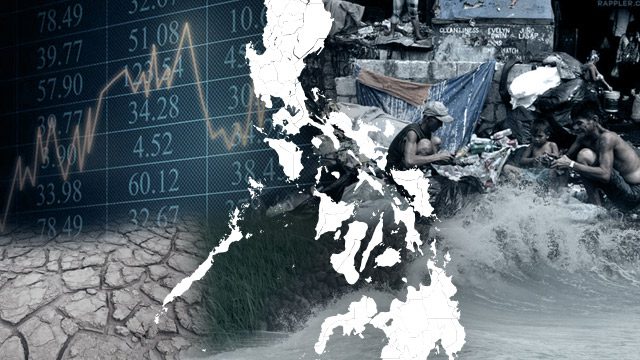SUMMARY
This is AI generated summarization, which may have errors. For context, always refer to the full article.

The international climate negotiations kicked off in Marrakech on November 7, with His Excellency Mr. Salaheddine Mezouar of the Kingdom of Morocco assuming the COP Presidency.
COP22, or the 22nd Session of the Conference of the Parties (COP) to the UN Framework Convention on Climate Change (UNFCCC), is considered a COP of action and solutions. For the next two weeks from November 7 to 18, 2016, countries will be meeting to agree on how global action to address climate change can be enhanced and to decide on specific mechanisms to implement the Paris Agreement. We will be participating in this work to pin down the detailed rules of the Paris Agreement, being both civil society advisers to the Philippine delegation representing our country here in Marrakech. Both of us were also in Paris, France last December 2015 when the lastest climate change agreement was adopted at the conclusion of COP 21.
From Paris to Marrakech, the Paris Agreement entered into force on November 4, 2016. It is the fastest global treaty to meet the ratification requirements to take it into effect. While the Philippines signed the Paris Agreement on April 22, 2016, the first day it was opened for signature, we are still going through the process of ratification so that we can formally become party to it. The Philippine Constitution requires the President to ratify the agreement, submit this instrument of ratification to the Senate for their concurrence, and at least 2/3 of the Senators must concur in the ratification. After this, our instrument of ratification must be deposited with the UN Secretary-General.
While initially expressing reservations about the Paris Agreement, President Duterte announced, on the eve of the Marrakech conference, that he is now ready to ratify the agreement. This is welcome as ratification of the Paris Agreement will ensure that we have a vote in crucial decisions about how the world will henceforth act collectively to address climate change. Through the support mechanisms provided to Paris Agreement Parties, the Philippines will also be able to augment its means to transition to a clean energy system, conserve and enhance its forests, improve land use, make its urban areas more habitable, and support environmentally friendly industrialization.
In a press conference on Day 1 of COP22, Mr. Mezouar said that developing countries are expecting COP22 to provide clarification on how they can receive the support they need so they can implement the Paris Agreement in their home countries.
This support is by way of climate finance, capacity building, and technology development and transfer. Mr. Mezouar also said that the next two weeks will provide clarification on, among others, partnerships for the Nationally Determined Contributions (NDCs), which are designed to facilitate and strengthen capacity building support from developed countries to developing countries. The NDCs contain the voluntary commitments of each country towards the global climate goal of keeping the average temperature increase to 2 degrees Celsius, the level scientists agree we must not exceed if we wish to keep our communities habitable.
Climate change and development
Briefly, ownership of climate change action as a priority agenda enables the Philippines to climate-proof its economic and population growth.
This means that, in order to safeguard our economic and development gains and our growing population against climate-related setbacks, we must ensure that our development plans insulate our communities from the impacts of climate change as much as possible and allow our country to transition into a low-carbon pathway.

This requires rigorous and systematic policy planning and implementation across all sectors and at all levels of government. Among others, our development plans must contain policies that will achieve the following:
- Increase the capacity of our communities to cope with climate change impacts that are already unavoidable
- Lessen the resulting loss and damage that Filipino communities experience from both rapid-onset events like tropical cyclones, storm surges, flashfloods, and earthquakes, and slow-onset events such as droughts, desertification, and ocean acidification
- Work towards reducing the amount of greenhouse gases we emit into the atmosphere. In climate parlance, these measures are called adaptation actions, risk transfer mechanisms, and mitigation actions, respectively.
But, will pursuing these climate actions limit the Philippines’ ability to develop its economy? We think not.
On the contrary, if we do not do anything about climate change, we will be putting at risk many lives, livelihoods, homes, infrastructure, and investments – all of which, despite their having taken several years to build, could be wiped out in a matter of days by record-breaking events like Supertyphoons Yolanda in 2013 and Lawin just last month.
To put things in context, the World Bank estimated that Supertyphoon Yolanda cost the Philippines about Php 424 billion (3.7% of GDP) in damaged physical assets, approximately Php 571 billion (4.9% of GDP) in total loss and damage, and some Php 361 billion (3.1% of GDP) in reconstruction costs. Therefore, in the long term, it may cost the Philippines more to ignore climate change than to address it early on.
Entry into force of Paris Agreement
The good news is that the world has been paying serious attention to the global climate crisis. This is evident from the early entry into force of the Paris Agreement, which occurred on November 4, 2016, despite initial expectations that it will take years for its effectivity to be triggered. To date, 101 countries accounting for 69.52% of total global GHG emissions have now ratified the Paris Agreement, demonstrating that the world is taking climate change very seriously.
As we move to ratify the Paris Agreement, we must ensure that our country’s development plans are aligned with the global climate goals of keeping the temperature increase to 2 degrees above pre-industrial levels, and pursuing measures to limit such increase to 1.5ºC. This, because we are among the most vulnerable countries to climate change.
But this does not mean that we should abandon our goals of development and growth. Certainly, we must plan strategically and commit only to those actions that do not keep Filipinos in the vicious cycle of poverty or impede their access to reliable, affordable energy that is needed to support the country’s economic growth. It must be noted that climate action is not incompatible with economic development. In fact, that both the UNFCCC and the Paris Agreement, which are the most significant climate change accords today, recognize the social and economic development needs of developing countries like the Philippines. Thus, ratifying the Paris Agreement will not consign us to economic ruin.
Climate change and Duterte’s 10-point agenda
Moreover, climate-proofing our economic development is not incompatible with – but in fact helps fulfill – President Duterte’s 10-point agenda.
The response to climate change can take many forms, such as the implementation of mitigation and adaptation actions and the minimization of loss and damage arising out of climate change impacts. Mitigation actions include shifting to renewable energy, sustainable transport systems, improved waste management, more efficient agricultural practices, enhanced forest conservation, sustainable management of forests and enhancement of forest carbon stocks, and reducing emissions from deforestation and forest degradation.
Adaptation actions include improvements in coastal flood defenses; bridge, road, and building repairs; climate-proofing infrastructure; and building on the resilience of socioeconomic and ecological systems, including through economic diversification and sustainable management of natural resources. Minimization of loss and damage includes providing insurance for catastrophic events as well as slow-onset impacts like drought and sea-level rise.
Pursuing these and other climate actions can provide co-benefits that fulfill the following priorities laid out in President Duterte’s 10-point socioeconomic agenda:
- Improve social protection programs, including the government’s Conditional Cash Transfer program
- Promote science, technology, and the creative arts to enhance innovation and creative capacity.
- Promote rural and value chain development toward increasing agricultural and rural enterprise productivity and rural tourism.
- Ensure security of land tenure to encourage investments, and address bottlenecks in land management and titling agencies.
- Accelerate annual infrastructure spending to account for 5% of GDP, with Public-Private Partnerships playing a key role.
- Invest in human capital development, including health and education systems, and match skills and training.
- Increase competitiveness and the ease of doing business.
If the Philippines decides to ratify the Paris Agreement, it must take important steps to implement it domestically. To implement the Paris Agreement, the Philippines must first determine how it intends to contribute to climate action (in a document called the nationally determined contribution or the NDC), and then create a roadmap to realize that NDC.
What’s next after Marrakech?
Moving on from Marrakech, now that we will be ratifying the Paris Agreement, we must face the challenges the Philippines faces as it strives to grow its economy and improve the lives of Filipinos, while ensuring that this growth is not impeded by extreme weather events and other large-scale climate change impacts that the country is now perennially exposed to.
To ensure a greater chance of keeping our country livable, we must mainstream climate action. We will only be the architects of our destruction if we do not.
And to do this right, there is no other place to start but radically transforming our energy system. The next article of this series will look at the possibility of such a transformation. – Rappler.com
(Authors’ note: This is the first of a three-part series on climate change and energy. The articles are based on policy briefs produced under the “Getting our Act Together,” project of the Ateneo School of Government in partnership with SSG Advisors. This projects was designed to contribute to the discourse on Philippine climate and energy policies as the country tries to balance its economic growth targets with the exigencies of sustainable development.)
Add a comment
How does this make you feel?
There are no comments yet. Add your comment to start the conversation.